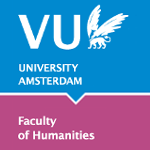
|
Digital Humanities Workbench |
Home page > Digital data > Digital text > Types > Enhanced e-text Enhanced e-textIn this workbench, the term enhanced e-text refers to e-texts with all sorts of added functionality. This can be, for example, a table of contents and/or browsing buttons that simplify navigation through a text, a tool to search the web for words or search the text for certain phrases, or links in the text, footnotes or endnotes, and/or text glosses that can be clicked by the user to request additional information. The ultimate form of interactive e-text is the presentation of a literary, philosophical or historical text as a hypertext, in which various internal links connect words, concepts and/or text fragments. There may also be a feature that provides access to an online concordance for the text, or additional (secondary) information about the text. These additional features make e-texts especially useful as study objects. The more functionality an e-text contains, the more operations are required in order to use it for one's own research after downloading (such as computer-assisted text analysis). If that is your goal, it is usually better to look for another version of the text. Note: The digital critical edition is a special kind of enhanced e-text, which is treated separately. Examples:
|
Other topics in this section: Introduction Digital facsimile E-text Critical edition E-books and audiobooks |
